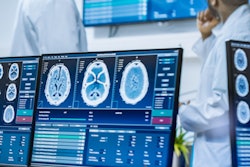
The use of nonphysician practitioners (NPPs) in emergency department (ED) settings boosts the use of imaging, according to a study that analyzed nearly 17 million emergency visits. The results were published on November 10 in JAMA Network Open.
Researchers led by Eric Christensen, PhD, from the Harvey L. Neiman Health Policy Institute in Reston, VA, reported that the presence of NPPs in the ED was linked to a more than 5% increase in imaging studies ordered per department visit.
"This increase is attributable to both a greater likelihood of an ED visit having imaging, and if the ED visit has imaging, more imaging studies per visit," Christensen told AuntMinnie.com.
The use of NPPs, such as nurse practitioners and physician assistants, in emergency settings has grown in recent decades. Christensen said the benefits of NPPs in this setting include increased access and reduced evaluation and management costs, given that Medicare reimburses NPP services at 85% of the rate it pays physicians.
However, he added that these benefits are "at least partially" offset by the increased costs tied to higher imaging volume and a higher individual radiation dose. In addition, in recent decades, the use of CT, MRI, and ultrasound imaging in EDs has increased.
Christensen and colleagues explored imaging ordering patterns in ED visits and investigated whether the patterns differed among visits managed by NPPs. They also considered differences in ordering patterns based on the share of ED visits in each state by year where the clinician of record was an NPP. Their study included Medicare data from 16,922,274 emergency department visits between 2005 and 2020.
The share of all ED visits with an NPP as the clinician increased between 2005 and 2020; in fact, the presence of NPPs in this setting was linked to a 5.3% increase in imaging studies per department visit compared to an ED without NPPs on staff.
By modality, CT saw the highest net increase in use by NPPs on mean imaging studies at 7.3%. Radiography was next at 3.2% while "other" modalities accounted for 14.2% of all imaging studies ordered.
"Such differential use of imaging is not unique to the emergency department, as NPPs have been found to be 1.34 times more likely to order imaging than physicians in the outpatient office setting," the authors explained.
The authors also wrote that while this study did not focus on costs, increased imaging use seen in their results "confirms that there is at least some offset." They suggested that differences in imaging ordering practices by modality may help with strategies to reduce practice variation.
"These efforts need to be tailored to clinician type given the differences in ordering patterns between NPPs and physicians, ... [and] radiologists may be able to provide guidance on these variation reduction efforts," Christensen group added.




















